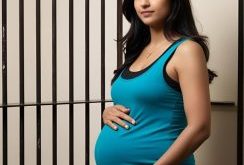Mesotherapy is a convenient, safe, and painless non-surgical procedure. It has found its way into the aesthetic world and is employed for various indications such as lipolysis, skin rejuvenation, pigmentation and hair loss. The procedure involves delivery of mixture or cocktail of different compounds (plant extracts, nutrients, enzymes, homeopathic agents, pharmaceuticals, vitamins, amino acids, and other bioactive substances) into the dermis or subcutaneous layer. A variety of techniques have been employed.
The newer no-needle and micro-needle techniques are less invasive. Ingredients of the chosen mesa cocktail depend on the indication and play a major role in the outcome. Despite its popularity, mesotherapy has a scarcity of large-scale studies on its efficacy and safety profile. Nevertheless, the choice of the meso product and technique must be done with great detail to achieve the best desired results.
MECHANISM OF ACTION AND RATIONALE
The exact mechanism of action of mesotherapy is unclear. Essentially, mesotherapy allows that the agent being used bypasses the systemic effects of oral or intravenous route of medications and acts at a greater depth when compared to a simple topical treatment.
Mesotherapy is believed to promote the body’s circulatory, lymphatic and immune system to incite a biological response.
Following are the basic qualities of mesotherapy procedure which allows the technique to be a safe and effective procedure;
- It aids in the penetration of large size molecules into the superficial layers of the skin and Hair.
- Due to slow clearance of superficially delivered drugs by the general circulation, mesotherapy results in gradual penetration of the drugs into the dermis/target area resulting in a longer duration of action, decreased dosing and faster outcomes.
- Multiple pricks during the procedure result in improved microcirculation,
- epidermal turnover and stimulation of collagen remodelling, imparting improved tone and texture to the skin and Hair.
- As the penetration is restricted to the upper layers of skin, the procedure
- has minimal invasiveness and pain, though in some it can be combined with topical anaesthesia.
Mesotherapy and Hair
Androgenetic alopecia (AGA) is the most common type of alopecia, affecting up to 80% of males and 50% of females.1 It is a chronic, progressive, non scarring androgen‐dependent condition that affects genetically predisposed individuals, leading to progressive follicular thinning of hair. Currently, only topical minoxidil and oral finasteride are approved for its treatment by USFDA has as of now.
Mesotherapy or intradermotherapy is a technique defined as multiple intradermal injections of pharmaceutically active substances in low doses, at numerous points, near/over the affected sites, at longer time intervals than conventional routes. Once the drug is administered, it achieves a longer lasting effect and a great local bioavailability. The injectable blend for mesotherapy may contain several drugs. In the
in the present case report, we used finasteride, minoxidil, dexpanthenol, and biotin. Finasteride is a selective inhibitor of type II 5 alpha‐reductase located mainly in hair follicles and prostate. Dihydrotestosterone (DHT) is the hormone that promotes hair miniaturization, an important phenomenon in the pathophysiology of androgenetic alopecia.
Finasteride decreases the levels of DHT and therefore its action is specific to hair.
Minoxidil has a vasodilator effect, promotes hair growth through upregulation of vascular endothelial growth factor (VEGF), and prolongs the anagen phase by its antiapoptotic action, promoting thickening of hair shaft and increase in hair density.
The recommendation is that only physicians should start mesotherapy, in a medical environment, after proper diagnosis, using sterile single use syringes and needles, according to the accepted standard hygiene precautions.
The procedure of this promising technique must be done with rigorous asepsis, use of safe components, correct indication, and adequate execution. And although additional clinical trials are still required to standardize the therapy, to document the reproducibility of results, to compare to other techniques as platelet‐rich plasma (PRP), to study complications, and to establish guidelines, mesotherapy seems to be a good and safe adjuvant therapeutic option in the treatment of AGA.
However, some of the other physicians and dermatologists do not completely agree with its application widely and keep it reserved for some individuals who possibly would not like to opt for Hair transplantation or postpone it for a few years.
Dr Sunil Kumar Prabhu, Senior Dermatologist and Aesthetic Physician, Aster RV hospitals
 Newspatrolling.com News cum Content Syndication Portal Online
Newspatrolling.com News cum Content Syndication Portal Online







